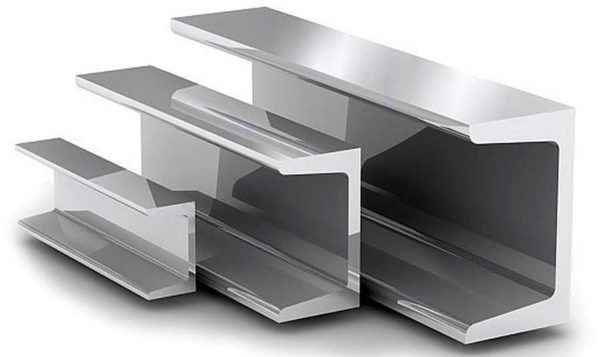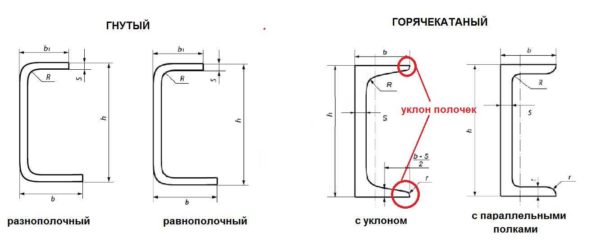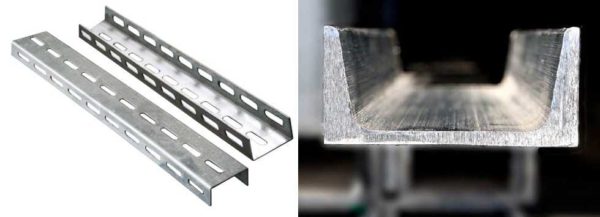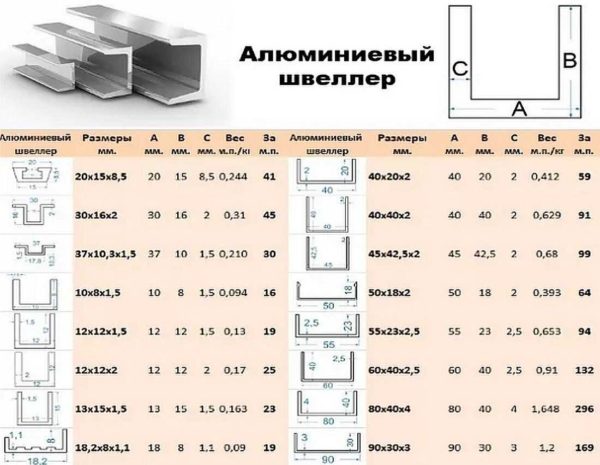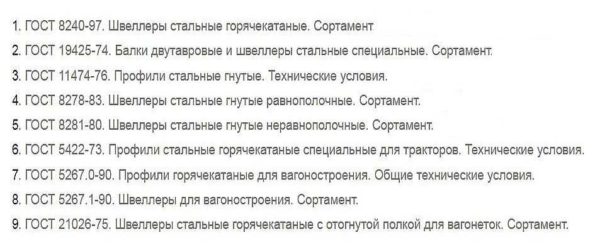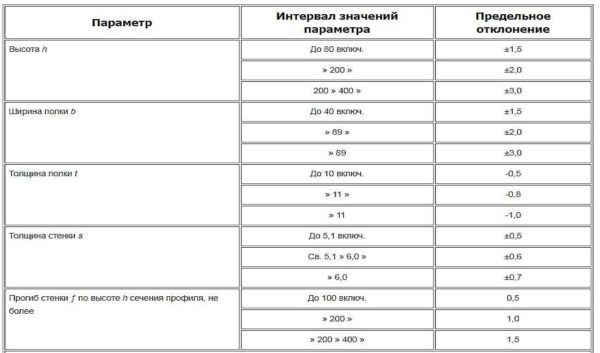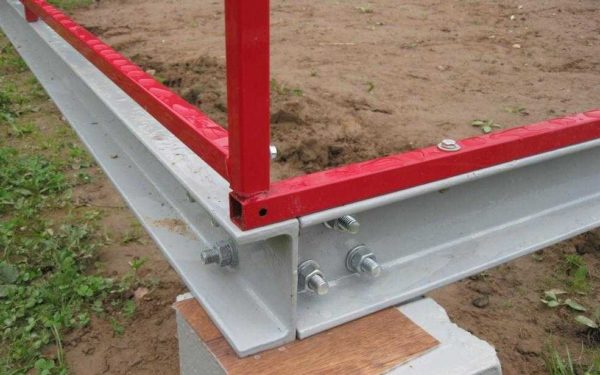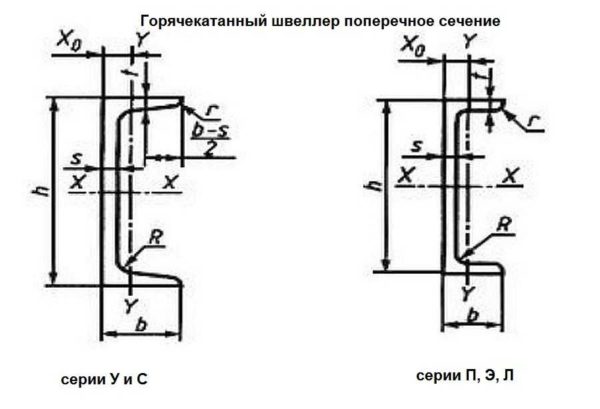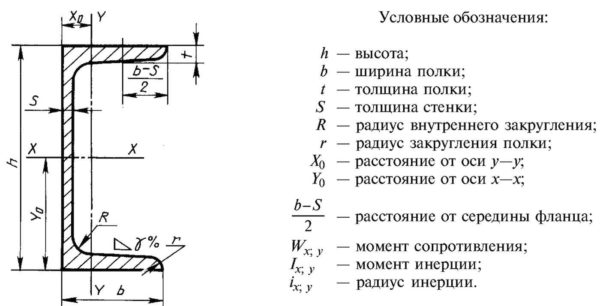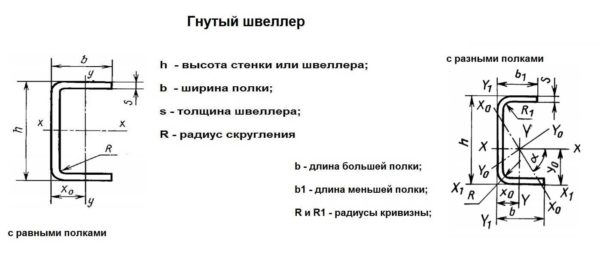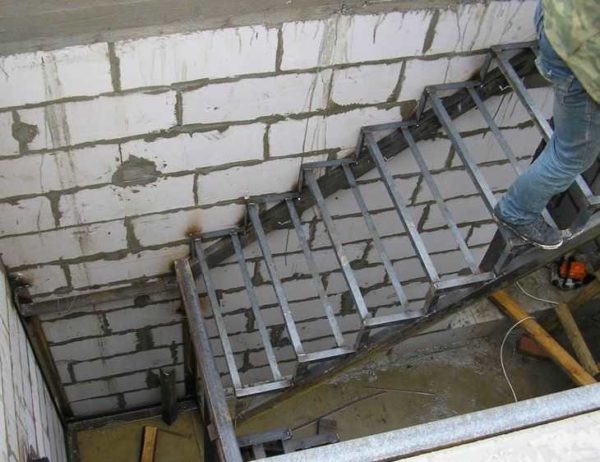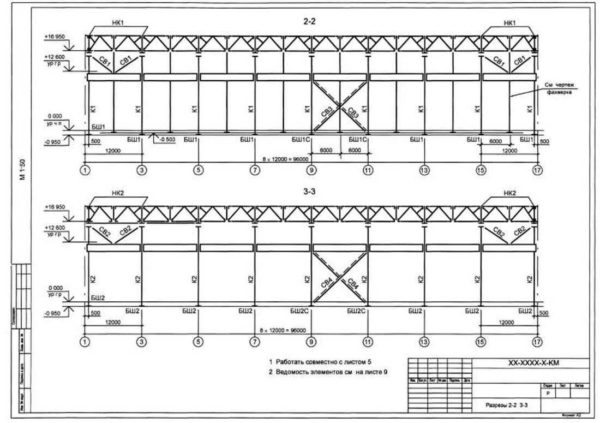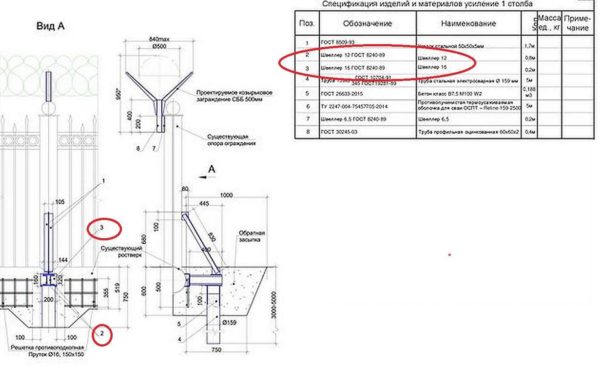Channel: types and tables of standard sizes according to GOST
To make a strong frame, a shaped tube is often used. But this is not the only option. There is also a channel. Due to the presence of stiffening ribs at the folds, it has a high bearing capacity, lower weight and cost. And the dimensions of the channel in accordance with GOST allow it to be used even for creating loaded structures.
The content of the article
What is a channel and its types
U-shaped shaped metal products, which are made of black and alloy steel, are called channel bars. The main property is high resistance to vertical bending loads. It is lower than that of I-beams, but at a price the channel is not so expensive, and the weight is less.
By the way, the “legs” of the letter “P” are called the shelves at the channel, and the bridge between them is called the back. And the channel number (the number that stands after the symbol) reflects its height (back width).
A channel is used when creating frames to increase the bearing capacity. For example, when arranging floors, over door and window openings, when constructing stairs, fences to them. This is what concerns private construction. In general, the channel is used in the construction of cars, cars and ships. They are used to assemble bridges and cranes. In general, the scope is wide.
Standardized views
According to the manufacturing method, channels are hot-rolled and bent. Bent can be with equal or different lengths of the shelves. They differ from rolled ones by smoother rounding at the places where the backrest passes into the shelves.
Rolled can be with parallel shelves - series P or with a slope of shelves - series U. But do not think that "slope" is the slope of the shelves. They, in any case, should be perpendicular to the back. The slope is understood as a smooth and gradual decrease in the thickness of the shelves. It can be from 4% to 10%. There are three more types of rolled channels. They differ in the length and thickness of the shelves: C - special, L - light and E - economical.
By the way, curved channels have their own designation. They have two of the same classes. One has shelves of the same length and is called equal-shelf, the second shelf has different lengths, it is called a multi-shelf.
Also, in the specification or marking of channels, the accuracy class is affixed: A - high, B - normal. The bent ones also have class B - this is increased accuracy. High and improved accuracy is usually required for industrial applications. For private construction, class B is more than enough.
Expansion of the range
Standard channels are made to fit by welding. But there are designs that are more convenient if it is possible to assemble and disassemble them. For this, perforated U-shaped metal products are produced. It is made of 2-5 mm thick galvanized sheet steel.
The perforated channel SHP is designated, then the number of faces with perforation is affixed, and then the dimensions in millimeters. The first is the height of the product (back length), and then the length of the shelves. Range of sizes of ШП - height from 50 mm to 400 mm, length of shelves - 20-180 mm. Perforated rolled products are used to assemble shelves, racks, other storage systems, and scaffolding.
There are several special series of perforated channels. K235, K225, K240 - wiring with perforation. They are used to create systems in which cables are laid. Metal removes heat well, and the presence of holes further increases this figure.
There are also aluminum channels and aluminum alloys. They are not used in load-bearing structures. Most often used as a finishing or decorative element. May be part of separation systems. For example, office partitions, racks-desks-consoles, etc. Small aluminum channels can be used for installation LED backlights, since aluminum removes heat very well, and this is a guarantee of durability LEDs.
Standards
There are nine standards that prescribe different types and types of channels. They list the entire range, specifications and designations in full. But most of them are special types and types that are made according to the orders of enterprises. They do not go on sale, and they are not needed at an ordinary construction site or on the farm. For example, GOST 21026-75 describes specific channels for the mining industry. They are distinguished by bent shelves. The 5267 standards describe varieties for car building.
The parameters of wide-range channels are specified in three standards.
- GOST 8240-97 (replacing the old 8240-89). It lists the range and sizes of hot rolled products.
- The dimensions and parameters of the bent ones are prescribed:
- GOST 8278 - with shelves of equal length
- GOST 8281 - with shelves of different lengths.
These documents describe the dimensions of the channel in accordance with GOST, weight, technical parameters and permissible deviations. Please note that the bearing capacity is not written, as it strongly depends on how the channel is laid. The maximum load is calculated for each specific case, therefore there are no tables with such data.
Range of hot-rolled channels according to GOST 8240-97
The main area of application of rolled channels is the creation and reinforcement of load-bearing structures. Therefore, it is required to adhere exactly to the parameters. The standards describe all values, up to the permissible deviations. Usually they are no more than a few percent of the parameter, but there are exceptions.
Also note that the weight of the channel is for reference only. That is, it is designed for a certain steel grade. In the standards, its density is 7.85 g / cm³. For denser steel, the weight will be higher, for more porous steel, less. The exact weight must be specified by the manufacturer, as well as the steel grade and density. Channels are made in lengths from 2 to 12 meters, they can be longer.
Rounding and slopes of shelves are also in GOSTs, but they are given for building a profile, and not for control. This information is not required for consumers, so we did not include it in our tables.
There is no special marking. The height of the product is indicated simply in centimeters, followed by a letter that denotes the type of section and group. For example, a 6.5E channel (back height 6.5 cm, economy group, and the remaining channel dimensions according to GOST, see the table), 12P or 12U - these products have a height of 12 cm, but one has parallel shelves (this is 12P), another with a slope (12U). In addition to these numbers, the accuracy class may also be indicated. There are no other parameters - the length of the shelves, the thickness of the back and shelves - in the designation. Therefore, for this type of metal products, tables with dimensions are needed. They are listed below by grade.
Dimensions and weight of rolled U-channels
Channel U differs in that its shelves are getting thinner from back to ends. This gradual decrease in thickness is called slope. If you look closely at the drawings of the U and P profile, you will see what the difference is.
| U series channel number | Back height, mm | Shelf width, mm | Back thickness, mm | Shelf thickness, mm | Weight of 1 meter, kg |
|---|---|---|---|---|---|
| 5U | 50 | 32 | 4,4 | 7,0 | 4,84 |
| 6.5U | 65 | 36 | 4,,4 | 7,,2 | 5,90 |
| 8U | 80 | 40 | 4,5 | 7,4 | 7,05 |
| 10U | 100 | 46 | 4,5 | 7,6 | 8,59 |
| 12U | 120 | 52 | 4,8 | 7,8 | 10,4 |
| 14U | 140 | 58 | 4,9 | 8,1 | 12,3 |
| 16U | 160 | 64 | 5,0 | 8,4 | 14,2 |
| 16aU | 160 | 68 | 5,0 | 9,0 | 15,3 |
| 18U | 180 | 70 | 5,1 | 8,7 | 16,,3 |
| 18aU | 180 | 74 | 5,1 | 9,3 | 17,4 |
| 20U | 200 | 76 | 5,2 | 9,0 | 18,4 |
| 22U | 220 | 82 | 5,4 | 9,5 | 21,0 |
| 24U | 240 | 90 | 5,6 | 10,0 | 24,0 |
| 27U | 270 | 95 | 6,0 | 10,5 | 27,7 |
| 30U | 300 | 100 | 6,5 | 11,0 | 31,8 |
| 33U | 330 | 105 | 7,0 | 11,7 | 36,5 |
| 36U | 360 | 110 | 7,5 | 12,6 | 41,9 |
| 40U | 400 | 115 | 8,0 | 13,5 | 48,3 |
The height of rolled U-channels is from 50 mm to 400 mm, the width of the shelves is from 32 mm to 115 mm. Standard assortment and weight are listed in the table.
Special rolled channels C: dimensions and weight of one meter
On the basis of the assortment with a slope, special channels are produced. They have one or more different parameters. In some cases, the shelf length is increased, in others the difference in thickness. In general, if you need a channel with a slope, but you did not find suitable dimensions in the U series, see also the C series.
| Channel number of C series | Back height, mm | Shelf width, mm | Back thickness, mm | Shelf thickness, mm | Weight of 1 meter, kg |
|---|---|---|---|---|---|
| 8C | 80 | 45 | 5,5 | 9,0 | 9,26 |
| 14C | 140 | 58 | 6,0 | 9,5 | 14,53 |
| 14CA | 140 | 60 | 8,0 | 9,5 | 16,72 |
| 16C | 160 | 63 | 6,5 | 10,0 | 17,53 |
| 16Ca | 160 | 65 | 8,5 | 10,0 | 19,74 |
| 18s | 180 | 68 | 7,0 | 10,5 | 20,20 |
| 18Ca | 180 | 70 | 9,0 | 10,5 | 23,00 |
| 18Sat | 180 | 100 | 8,0 | 10,5 | 26,72 |
| 20C | 200 | 73 | 7,0 | 11,0 | 22,63 |
| 20Ca | 200 | 75 | 9,0 | 11,0 | 25,77 |
| 20Sat | 200 | 100 | 8,0 | 11,0 | 28,71 |
| 24C | 240 | 85 | 9,5 | 14,0 | 34,9 |
| 26C | 260 | 65 | 10,0 | 16,0 | 34,61 |
| 26Ca | 260 | 65 | 10,0 | 11,0 | 39,72 |
| 30C | 300 | 85 | 7,5 | 13,5 | 34,44 |
| 30Ca | 300 | 87 | 9,5 | 13,5 | 39,15 |
| 30Sat | 300 | 89 | 11,5 | 13,5 | 43,86 |
The most common sizes are those that differ significantly from the standard. For example, the 18Sb channel has flanges 100 mm long, while the standard 18U version is only 70 mm long. Both the backrest and the shelves are thicker than steel: 8 mm and 10.5 mm versus 5.1 mm and 8.7 mm in the basic series. As you can see, the difference is significant. Channel 18Sb is more powerful than the basic version - 18U.
Parallel flange channel dimensions table (without slope) P series
Channel P has the same flange thickness along its entire length. Only towards the end do they smoothly round off. The radius of curvature is not controlled as it is not essential.
| Channel number of P series | Back height, mm | Shelf width, mm | Back thickness, mm | Shelf thickness, mm | Weight of 1 meter, kg |
|---|---|---|---|---|---|
| 5P | 50 | 32 | 4,4 | 7,0 | 4,84 |
| 6.5P | 65 | 36 | 4,4 | 7,2 | 5,90 |
| 8P | 80 | 40 | 4,5 | 7,4 | 7,05 |
| 10P | 100 | 46 | 4,5 | 7,6 | 8,59 |
| 12P | 120 | 52 | 4,8 | 7,8 | 10,4 |
| 14P | 140 | 58 | 4,9 | 8,1 | 12,3 |
| 16P | 160 | 64 | 5,0 | 8,4 | 14,2 |
| 16aP | 160 | 68 | 5,0 | 9,0 | 15,3 |
| 18P | 180 | 70 | 5,1 | 8,7 | 16,,3 |
| 18aP | 180 | 74 | 5,1 | 9,3 | 17,4 |
| 20P | 200 | 76 | 5,2 | 9,0 | 18,4 |
| 22P | 220 | 82 | 5,4 | 9,5 | 21,0 |
| 24P | 240 | 90 | 5,6 | 10,0 | 24,0 |
| 27P | 270 | 95 | 6,0 | 10,5 | 27,7 |
| 30P | 300 | 100 | 6,5 | 11,0 | 31,8 |
| 33P | 330 | 105 | 7,0 | 11,7 | 36,5 |
| 36P | 360 | 110 | 7,5 | 12,6 | 41,9 |
| 40P | 400 | 115 | 8,0 | 13,5 | 48,3 |
If you compare the two tables, you will see that the dimensions of the channel according to GOST U and P of the type of the same height do not differ in any way. All parameters are the same. Everything. Even the weight of one meter. The difference is in the shape of the shelves. Moreover, private traders often choose parallel shelves. Any material fits tightly on even shelves, there are no problems with the connection.
Range of rolled channels of E group (economy) with dimensions and weight
Channel bars with straight shelves are also available in the E - economy series. They differ from the P series in a slightly smaller backrest thickness. Other parameters except weight are unchanged. The weight is naturally a little less.
| E series channel number | Back height, mm | Shelf width, mm | Back thickness, mm | Shelf thickness, mm | Weight of 1 meter, kg |
|---|---|---|---|---|---|
| 5E | 50 | 32 | 4,2 | 7,0 | 4.79 |
| 6.5E | 65 | 36 | 4,2 | 7,2 | 5.82 |
| 8E | 80 | 40 | 4,2 | 7,4 | 6.92 |
| 10E | 100 | 46 | 4,2 | 7,6 | 8.47 |
| 12E | 120 | 52 | 4,5 | 7,8 | 10.24 |
| 14E | 140 | 58 | 4,6 | 8,1 | 12.15 |
| 16E | 160 | 64 | 4.7 | 8,4 | 14.01 |
| 18E | 180 | 70 | 4.8 | 8,7 | 16,,.01 |
| 20E | 200 | 76 | 4.9 | 9,0 | 18,07 |
| 22E | 220 | 82 | 5.1 | 9,5 | 20.69 |
| 24E | 240 | 90 | 5.3 | 10,0 | 23.69 |
| 27E | 270 | 95 | 5.8 | 10,5 | 27,37 |
| 30E | 300 | 100 | 6.3 | 11,0 | 31,35 |
| 33E | 330 | 105 | 6.9 | 11,7 | 36,14 |
| 36E | 360 | 110 | 7.4 | 12,6 | 41,53 |
| 40E | 400 | 115 | 7.9 | 13,5 | 47.97 |
It should be said that a decrease in the thickness of the back does not have a significant effect on the bearing capacity. But the mass is decreasing. So this is a really economical channel. Both in terms of metal and in terms of price. Less material consumption - less cost. If there is a need to save money, you can buy a channel by E.
Light channel (L series)
The lightweight L channel is useful in those structures where the load is not so great. It also has parallel shelves, but they are shorter and thinner. Thinner and back. This means that the lightweight series has less weight and, as a result, less bearing capacity. But heavy loads in the private sector are not often found, so the L channel for private construction is even more suitable. But it is better to calculate the bearing capacity.
| L series channel number | Back height, mm | Shelf width, mm | Back thickness, mm | Shelf thickness, mm | Weight of 1 meter, kg |
|---|---|---|---|---|---|
| 12L | 120 | 30 | 3,0 | 4,8 | 5,02 |
| 14L | 140 | 32 | 3,2 | 5,6 | 5,94 |
| 16L | 160 | 35 | 3,4 | 5,3 | 7,10 |
| 18L | 180 | 40 | 3,6 | 5,6 | 8,49 |
| 20L | 200 | 45 | 3,8 | 6,0 | 10,12 |
| 22L | 220 | 50 | 4,0 | 6,4 | 11,86 |
| 24L | 240 | 55 | 4,2 | 6,8 | 13,66 |
| 27L | 270 | 60 | 4,5 | 7,3 | 16,3 |
| 30L | 300 | 65 | 4,8 | 7,3 | 19,07 |
For example, let's compare the channel 14L and 14P.
- 14L has the following shelf dimensions: 32 mm long and 5.6 mm thick. Back thickness 3.2 mm.
- 14P dimensions: with shelves 58 mm long and 8.1 mm thick, backrest thickness 4.9 mm.
The difference is more than significant. It is also reflected in weight: meter 14P weighs 12.3 kg, and linear meter 14L - 5.94 kg. Twice smaller. This affects the cost of rental (of course), the cost of delivery. It is also lighter, easier to carry, lift, etc. But 3.2 mm is closer to thin metal. This means that you must be able to cook thin metal.
Channel dimensions according to GOST bent type
The channel is called bent because the sheet of metal is bent on sheet bending machines. There is no way to get a clear angle, like on hot-rolled ones, and the rounding at the place where the backrest passes into the shelf is smooth. It is for this part that one species can be distinguished from another. This option is good because it has a lower price. This is due to a simpler production technology.
As already mentioned, the shelves of the bent channel can be of the same or different length. The assortment is the same more. It makes no sense to give a table of dimensions for a bent channel. All the required parameters are spelled out in its marking. For example, 100 * 50 * 2. Everything is simple: the first is the height, the second is the size of the shelves, the third number is the thickness of the metal. With different shelves, it is not much more difficult: 65 * 55.20 * 3.5. This is a channel with different shelves. The first number is the height, the second is the length of the long shelf, the third is separated by commas for the short shelf, and then the thickness of the metal.
Dimensions with the same shelves "from" and "to"
To choose a material for your own needs, it is advisable to know the minimum and maximum size of this type of rental. Of course, the dimensions increase with some step, but you can roughly navigate, and then see what you are offered at the local metal warehouse.
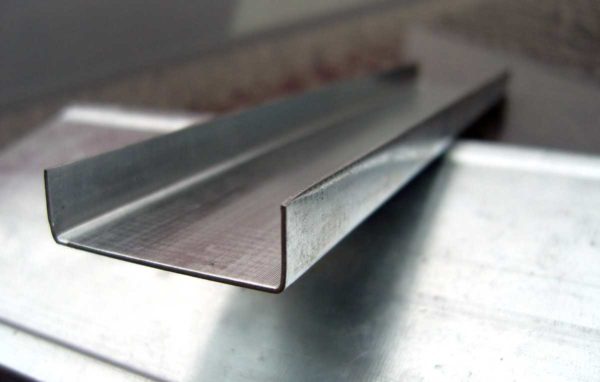
Photo of a curved channel. Pay attention to the place of the bend. It is smooth. This is a distinctive feature of the curved version.
The runaway of the parameters of a bent channel with the same shelves depends on the type of steel from which the product is made. The dimensions of the channel according to GOST can be as follows:
- Boiling and semi-calm carbon steel:
- height 25-410 mm,
- shelf length 26-180 mm,
- thickness 2.0 - 8.0 mm.
- Plain and low-alloy carbon steel:
- height 25-310 mm,
- shelf length 26-160 mm,
- thickness 2.0 - 8.0 mm.
Note. Unlike rolled, curved has the same thickness both on the back and on the shelves. It is understandable. They just bent the strip of metal. In a katan, the workpiece is heated, and then the required parameters are formed. And this is the fundamental difference.
It is also advisable to know how one type of steel differs from another. With alloyed compounds, everything is clear, the properties of stainless steel are known to everyone. And what is the difference between carbonaceous ones - boiling, semi-calm, calm? And the fact that the calm one is well welded, the boiling one is the most difficult to weld, the semi-calm one in this parameter is somewhere in the middle.
Dimensions of a multi-shelf
As for the multi-shelf version, it is also made from the same grades of steel. But the run-up of parameters does not depend on the type of material. Not in the sense that all sizes are the same, but in the fact that their limiting values - the largest and smallest - are the same. And the dimensions - the height and length of the shelves - are, of course, different.
So, the dimensions of a bent U-shaped channel with different shelves can be as follows:
- height 32 - 300 mm;
- shelf length:
- length 22 - 160 mm,
- short 12 - 90 mm,
- channel thickness 2.0 - 8.0 mm.
As already mentioned, when designating the dimensions of this rental, the length of the shelves is indicated by commas. The first number is the long shelf, the second is the short one. For example, 90 * 80.50 * 4. We read like this, a bent channel 90 mm high, a long shelf 80 mm, a short shelf - 50 mm, metal thickness - 4 mm.
Designation in drawings
There is no special graphic icon to indicate the channel. In the drawings, any rental is indicated simply by a line. Nearby there may be a letter designation or part of it, which is important specifically for this site or node. In the example below there are letters ШБ, which means that the rolled metal is required for class B. Specific grades of material are indicated in the specification. GOST and size are prescribed there. For example, GOST 8240-97, channel 12P. This means that it is rolled with a backrest height of 120 mm and parallel shelves.
In other cases, when some complex nodes are displayed in detail in the drawings, the channel in the section is designated exactly as it looks: the letter "P". Unfold it the way it should be laid.
Specifically, the dimensions are prescribed in the specification. Everything is indicated clearly. This form of notation denotes rolled type. For bent, the parameters of the shelves would be indicated.For example, there would be: 80 * 60 * 4.0 or some other numbers from tables with standard sizes.

